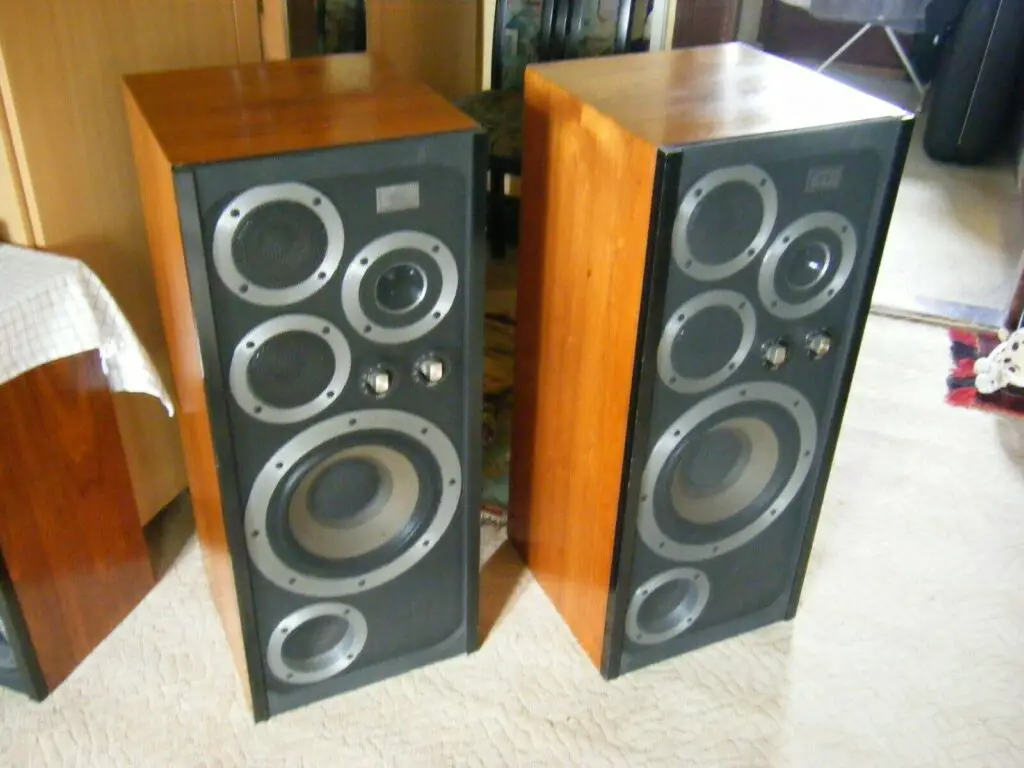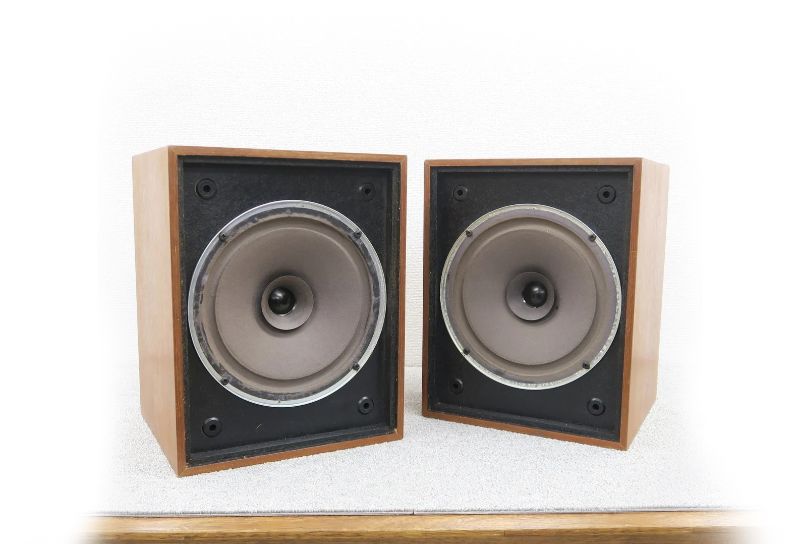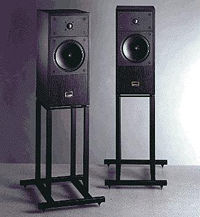Wharfedale is a well-known British loudspeaker brand that peaked in the 1970s, during the height of the British hi-fi boom, when it was controlled by the Rank Organization. The company, founded in 1932 by Gilbert Arthur Briggs in his Ilkley house in the Wharfe Valley, invented and constructed all of its own drive units, or at least shared them with other Rank organization goods. This gave them a distinct tone that proved to be extremely popular.
Loudspeakers: The Why and How of Good Reproduction, his most renowned book, was released in 1948. It was a popular reference work for novice speaker designers as well as hi-fi fans, and it was reissued several times. It was written in plain English, making the dark art of loudspeaker design surprisingly approachable. Gilbert Briggs sold Wharfedale Wireless Works to Rank in 1958 at the age of 68, and retired seven years later. By this time, he had presided over two key breakthroughs: the first usage of roll surrounds around paper cones and the introduction of the first ceramic magnet speakers. The company grew from strength to strength, and in 1967 it announced the opening of a massive 170,000-square-foot facility in Bradford’s Highfield Road. Rank brought the brand significantly downmarket in the 1970s, appealing to those who sought good sound on a budget.
The XP series, which were low budget boxes that offered significant value for money when compared to competing goods, really attracted the public’s attention. The range began with the £40 Chevin XP, which was introduced in the autumn of 1975. An eight-inch paper cone woofer and a small paper coned tweeter were fitted concentrically at the center of this compact cube-shaped, teak veneered box. The £60 Denton 2XP had two full-sized, distinct drive units, one of which was a big paper dome tweeter with an unusual design, mated to an eight-inch mid/bass. The number of drive units in the speaker was indicated by the figure preceding the ‘XP’ in the name.
The £80 Linton 3XP, a junior high end design, was the cheapest three-way in the collection. A three-inch paper midrange cone was added to the Denton’s driver complement. The £110 Glendale 3XP, a very huge hitter by most people’s standards, was at the top of the line. The Glendale had a ten-inch bass unit, compared to the Linton 3XP’s eight, with a claimed frequency response of 50Hz to 20kHz and a power handling of a respectable 40W RMS. It was quite sensitive by the standards of the day, at 86dB, but this is low for a large 356x610x305mm, 12kg loudspeaker by today’s standards. This is mainly owing to the Glendale’s infinite baffle design, which is shared by the entire XP series. Despite the fact that this method provides tighter bass, there are genuine trade-offs: for a given size, you either receive less bass extension or efficiency, and there’s a potential that the nominal impedance of the speaker reduces.
The Glendale 3XP is everything that modern speakers are not, according to today’s standards. It’s a boxy design with a broad baffle and no bass reflex loading. It’s a real three-way, with drivers that cross over at 800Hz and 4,000Hz, and a massive, poorly braced teak veneered cabinet that looks Paleolithic. The internal wiring isn’t up to snuff, the crossover components aren’t up to snuff, and the cabinet interiors aren’t suitably damped. Regardless, by today’s standards, this loudspeaker is still nicely built and finished. It doesn’t appear, feel, or sound cheap, which is why it’s so popular.
As soon as you hear the enormous Wharfedale, you’ll realize it’s a long way from what’s deemed attractive today. Polyester flared trousers are as mid-seventies as it gets. Despite this, it manages to be a pleasant experience. It has a little dreamy, diffuse sound that is both comfortable and confident. It’s pretty large and spacious, which means it works exceptionally well when you give it songs from the time period. Benny and the Jets by Elton John, for example, transports you back in time. This speaker sounds huge, broad, and gutsy from atop 30cm high frame stands, with a powerful bass response that’s less bumpy than you’d anticipate given the size of both the woofer and the cabinet. In fact, the Glendale’s bass is rather tuneful, and it will immediately have many people tapping their feet.
This loudspeaker has a warm and gentle tone to it. It covers everything in a cozy blanket. Treble is a touch rolled off at the top, but it doesn’t sear out at you before that. It effortlessly transitions to the midrange driver, which is likewise airy and hazy. It seamlessly transitions to the bass section, which delivers a solid thud from the sealed box cabinet that’s both fulsome and rounded. Despite this, it manages to reach the listener at roughly the same time as the other songs. Although the bass extension isn’t excellent, it does a good job of imitating the bassline from The Bee Gees’ How Deep is Your Love?, which is likely a tune it spent a lot of time playing…
The Glendale has so many flaws, but it still manages to be entertaining. You can wax poetic about the terrible stereo imaging and two-dimensional sound, but it will happily push visuals to the left and right when asked. You can criticise it for having a veiled midband, but it’s kind of alluring — like staring at an impressionist artwork. Overall, the Wharfedale proves to be a pleasant and engaging companion, because it sounds – no other way to put it — pleasant. Many people mourn the days of hi-fi when everything had a “lovely tone,” and the Glendale 3XP epitomises this.
The redesigned Glendale XP2 got a black grille instead of a cigar brown one, with the 2 suffix representing the second XP range, not the amount of drive units. With a new wood treatment and drive unit complement, the cabinet was discreetly altered, with the new cone tweeter being the most noticeable difference. It may have measured slightly better, but it was less enjoyable to listen to; it sounded tighter and tauter, but lacked some of the richness and charm of its predecessor.
Wharfedale began to lose its enchantment in the 1980s. The Laser series effectively superseded the Chevin/Denton/Linton/Glendale line-up, and while it appeared to be more modern, it was manufactured more inexpensively. The top-end Total Sound Recall series was good, but it was outshone by cheaper competitors from other brands, and it was only the Diamond, a spin-off, that became a hit in this decade. However, the world had moved on, and five years after its release, the Glendale 3XP appeared to be from another century. The domestic loudspeaker market is notorious for its ups and downs.
Wharfedale Glendale 3XPs may be had for cheap these days. Because they’re so unfashionable, they’re surprisingly inexpensive; this pair cost just £25. You could do a lot worse if you’re looking for something for your period/classic/retro system. You’ll be bathing in a louche, warm sound if you get a well-preserved pair of these — great for a high-end seventies music centre, stack system, or even decent mid-price hi-fi separates. However, the usual limitations apply: buy wisely, compare prices, and don’t expect a nearly forty-year-old loudspeaker to sound like your brand-new high-end KEFs.
Because speakers aren’t created of magical materials that last indefinitely, your first priority should be finding a good pair to begin with. Speakers with scuffed cabinets tell a tale about how they’ve been treated, but it’s not the end of the world. If the cab has chunks gouged out of it, the speaker should be avoided; but, if the wood has mild surface scratches, fading, or stains – but no indentation – it is easily salvageable. The simplest solution is to treat the wood with Danish oil, which will revive many vintage 1970s speakers; but, if the problem persists, you can sand off the varnish and reapply it, or just wax or treat the wood. Many historic speakers may be restored in this manner, and it’s well worth watching one of the many YouTube videos on speaker restoration to learn more.
Purchase speakers with the most powerful drive units available. Even so, the foam roll surrounds may be on their way out, but experts like Anapeach can help you replace them. You should also consider changing the capacitors and resistors in the crossover, which tend to degrade with time, and rewiring the speakers with high-quality cable. This is all basic stuff for those handy with a soldering iron, and it enhances the sound substantially by tightening the stereo image, improving bass definition, and enhancing midrange detail.







